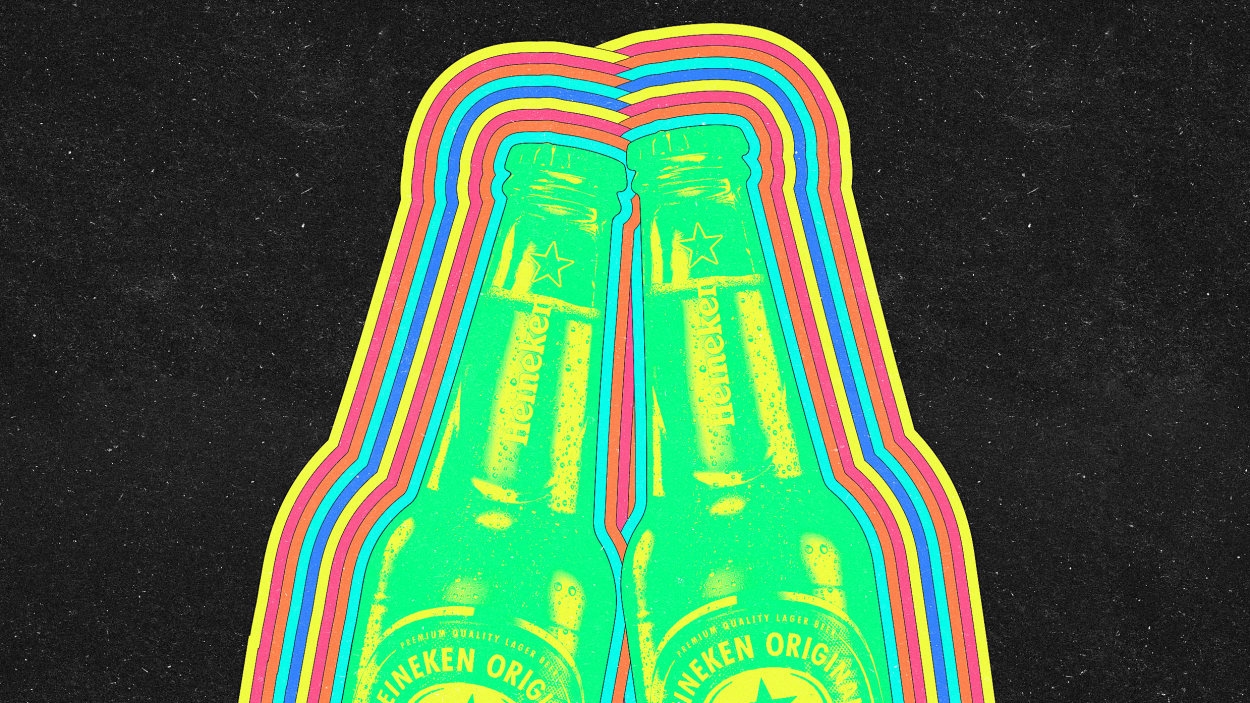Could a Heineken ad from 2017 actually hold the key to reducing partisan animosity?
Branded is a weekly column devoted to the intersection of marketing, business, design, and culture.
Partisan and ideological divides in the U.S. and elsewhere seem to deepen on a daily basis. What can be done about it? It turns out, a beer ad may actually have an answer.
This suggestion isn’t as wild as it might sound. Very serious and wide-ranging recent research from Stanford, of all places, cites a memorable Heineken commercial from a few years back as part of a potential intervention the researchers judged to be particularly effective at reducing “partisan animosity.”
We’ll get to the ad, below, but first, the back story. Last month, Robb Willer and Jan G. Voelkel of Stanford’s sociology department, in collaboration with scholars at a number of other universities, published a “megastudy” designed to identify “successful interventions to strengthen Americans’ democratic attitudes.” The resulting paper, running to more than 200 pages, covers a lot of ground, assessing 25 proposed online interventions like quizzes, interactive experiences, and videos (chosen from hundreds submitted), and comparing their effectiveness in a range of such categories as helping remedy antidemocratic attitudes and counter support for political violence.
Called the Strengthening Democracy Challenge, the project ran for three years and involved 32,000 American “partisan” participants. As Fast Company previously reported, the results varied, but showed flashes of promise. The research also drew some broader conclusions, noting how some strategies worked to address certain problems but not others, underscoring the need for further research.
But unexpectedly, as some observers on Twitter noticed, the top-scoring intervention in the category of reducing partisan animosity among study subjects was an exercise that involved watching a Heineken ad from 2017, titled “Worlds Apart.”
Clocking in at four and a half minutes—very little of that time referencing the beer brand in any way whatsoever—it’s practically a short film. It involves three pairs of ideological opposites who have never met: a right wing, antifeminist white guy and a lefty, feminist woman of color; a climate-change denier and an environmental activist; and a trans woman and a man who says that being trans is “not right.”
Each pair is left alone with some tasks to complete (building simple furniture), and little alternative but to talk, answering some prepared questions. They’re evidently given no guidance, and the “experiment” (to determine whether there might be “more that unites than divides”) is not explained to them. After building a preliminary bond, participants are shown videos of earlier interviews in which each voiced their (often strident) views. Then they’re asked whether they want to stay and have a beer with their opposite member, or leave. Having found common ground by this point, everyone stays. (And the Heineken logo finally appears as they share some cold ones.)
It’s actually surprisingly moving. Back when it first came out in 2017, in fact, Fast Company called it “the antidote” to the then-recent, instantly notorious, and eternally ludicrous Kendall Jenner Pepsi ad, in which the soda brand tried to signal support for the #Resistance by showing the reality star joining in with protesters and sharing a carbonated beverage. In contrast, the Heineken spot, made by Agency Publicis London, went “to the heart of political engagement in a straightforward way that makes Pepsi’s self-congratulatory ad seem even more embarrassing.”
In the Stanford megastudy, the ad shows up as part of an intervention proposed by Daniel Stone of Bowdoin College and colleagues. First, you choose whether you’re coming from a Democrat or Republican point of view. Then there’s a screen that describes the “echo chamber” problem—the concept that we only hear perspectives similar to our own. The idea of the project is to “trade” links: I send you something I think you ought to read, you send me something you think I should read. There’s a process for evaluating each other’s suggestions, designed to make the exchange as productive as possible. This plays off a link-swap project of Stone’s called Media Trades.
The megastudy version of the process depends heavily on watching the Heineken ad—which basically functions like a prime, offering a model of open-minded behavior and its potential rewards. (And one of the links you can send to is the video itself.) In some fundamental sense, the commercial simply illustrates a longstanding psychological/sociological idea referred to as “contact theory” or the “contact hypothesis,” which essentially argues that interaction in the right circumstances can reduce friction between members of opposing groups.
And as a reality check—or maybe I should say, an unreality check—it’s not likely Heineken’s ad agency put the pairs together without careful vetting. And they were not really alone, given the camera crew. This was not a real experiment or a documentary. It’s a commercial. Like all commercials, it’s an idealized version of reality, or a “reality” that masses of people aspire to. And that’s not a knock; that’s exactly what makes it effective in the context of an exploration of the persuasion tactics and strategies that might help improve public discourse. The Heineken commercial is basically a promotional message for the idea that, perhaps, there is some hope that we might all get along. There are worse things to advertise.
Branded is a weekly column devoted to the intersection of marketing, business, design, and culture.
Fast Company , Read Full Story
(21)



